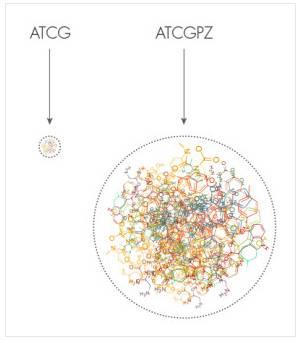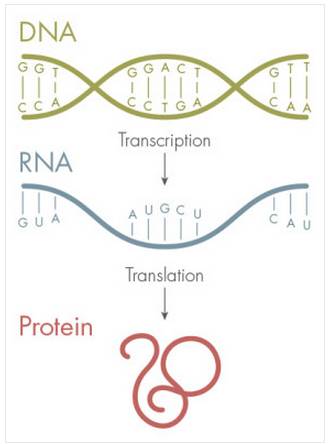

 Now Location:Home--News Center--Industry News
Now Location:Home--News Center--Industry News
On July 30th, Beijing time, according to foreign media reports, scientists have long believed that DNA uses an elegant double helix structure to store our genetic code. However, some scientists believe that the value of this structure is overestimated. "There are many things about DNA molecules that are wrong," said Steven Benner, an organic chemist at the Florida Applied Molecular Evolution Foundation

A. Six letters: T, G, C, P, Z
Benner's research was first published in Quanta magazine
About 30 years ago, Benner drafted a better version of DNA and its chemical cousin RNA. He added new letters and other substances to DNA and RNA, thereby enhancing their abilities. Benner also wants to know why these improvements did not occur in organisms. The natural language of life consists of only four chemical letters: G, C, A, and T. Is there any special reason why our genetic code relies solely on these four nucleotides? Or is the existing system just a possibility, coincidentally chosen by nature? Perhaps expanding the number of alphabets would be better.

Increasing the number of letters can greatly increase the possible types of amino acids

The genetic code consists of four nucleotides A, T, G, and C. DNA is first transcribed into RNA, which then forms specific proteins
Although early attempts by Benner to synthesize new chemical letters were unsuccessful. But with each failure, his team became increasingly aware of how to obtain excellent nucleotides (genetic letters). In addition, they also gained a better understanding of the precise molecular details that make DNA and RNA work properly. The progress of the entire research process is slow because scientists must design new tools to operate the extended letters they have added. Benner said, "We have to artificially design DNA, and it took nature 4 billion years to create and produce the DNA we have today."
After decades of hard work, the Benner team has now synthesized enhanced DNA with functions similar to or even better than ordinary DNA. In two papers published last month in the American Chemical Society, they stated that two synthetic nucleotides called P and Z can seamlessly integrate into the helical structure of DNA, and adding these two new letters can also maintain the natural shape of DNA. In addition, DNA sequences containing new letters can evolve like traditional DNA, which means that scientists have successfully expanded the genetic alphabet for the first time.
In the experiment, the performance of the new nucleotide even surpassed its natural counterparts. When it is necessary to selectively bind the DNA sequence of cancer cells through evolution, DNA with the letters P and Z performs better. Andrew Ellington, a biochemist at the University of Texas at Austin, was not involved in the study. He said, "When you compare the 4-nucleotide alphabet to the 6-nucleotide alphabet, the 6-nucleotide alphabet seems to be better."
Benner has high expectations for his synthetic molecules. He wants to use them to create another genetic system, where proteins are not necessary. In modern organisms, proteins are foldable molecules that perform essential biological functions. Benner believes that perhaps the genetic systems of life on other planets only have two components, rather than our standard ternary system: DNA, RNA, and protein.
The main job of DNA is to store information, and its letter sequence contains the blueprint for constructing proteins. Our current letters can encode 20 amino acids, which together create millions of different proteins. But the six letters may encode up to 216 amino acids, producing more proteins.
Why nature insists on the four letters is a fundamental question in biology. Scientists believe that additional letters can make the entire system more error prone. However, the potential advantages of a larger alphabet may compensate for its shortcomings. In fact, adding new letters to RNA can increase its ability. Ellington said, "Compared to four letters, six letters can fold out more different structures." Benner believes that this method may make RNA a better catalyst.
The second paper by the Benner team demonstrated the actual performance of expanding the alphabet. In the experiment, researchers first randomly selected DNA strands composed of an enlarged alphabet, and then selected DNA strands that could be bound to liver cancer cells but not to other cells. Among the 12 successfully bound DNA strands, the best performing DNA strand contained the letters Z and P, while the worst performing DNA strand did not. Of course, scientists need more experiments to confirm that this is not a coincidence.
Benner also hopes to further expand the gene alphabet to enhance more functions. He is currently committed to creating a 10 or 12 letter genetic system and plans to transfer the new letters into live cells. The synthetic molecules studied by Benner and other scientists have proved useful in medicine and biotechnology, such as diagnostic tests for HIV and other diseases. In fact, Benner's work helps to explore new fields in synthetic biology. In addition to using molecules to create new useful tools, his work can also bring new lives to humanity.
In addition, Benner believes that compared to the human ternary system containing DNA, RNA, and proteins, the evolution speed of the binary system may be faster. If this is true, there may really be life on planets far away from Earth. Benner said, "If we find life elsewhere, they are likely binary biopolymer systems."
Text: Sina Technology
